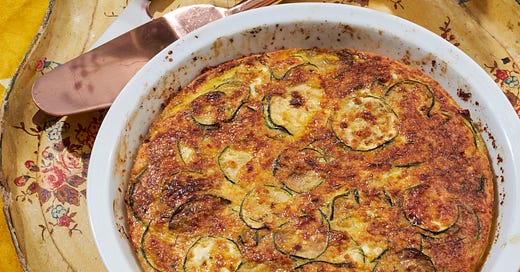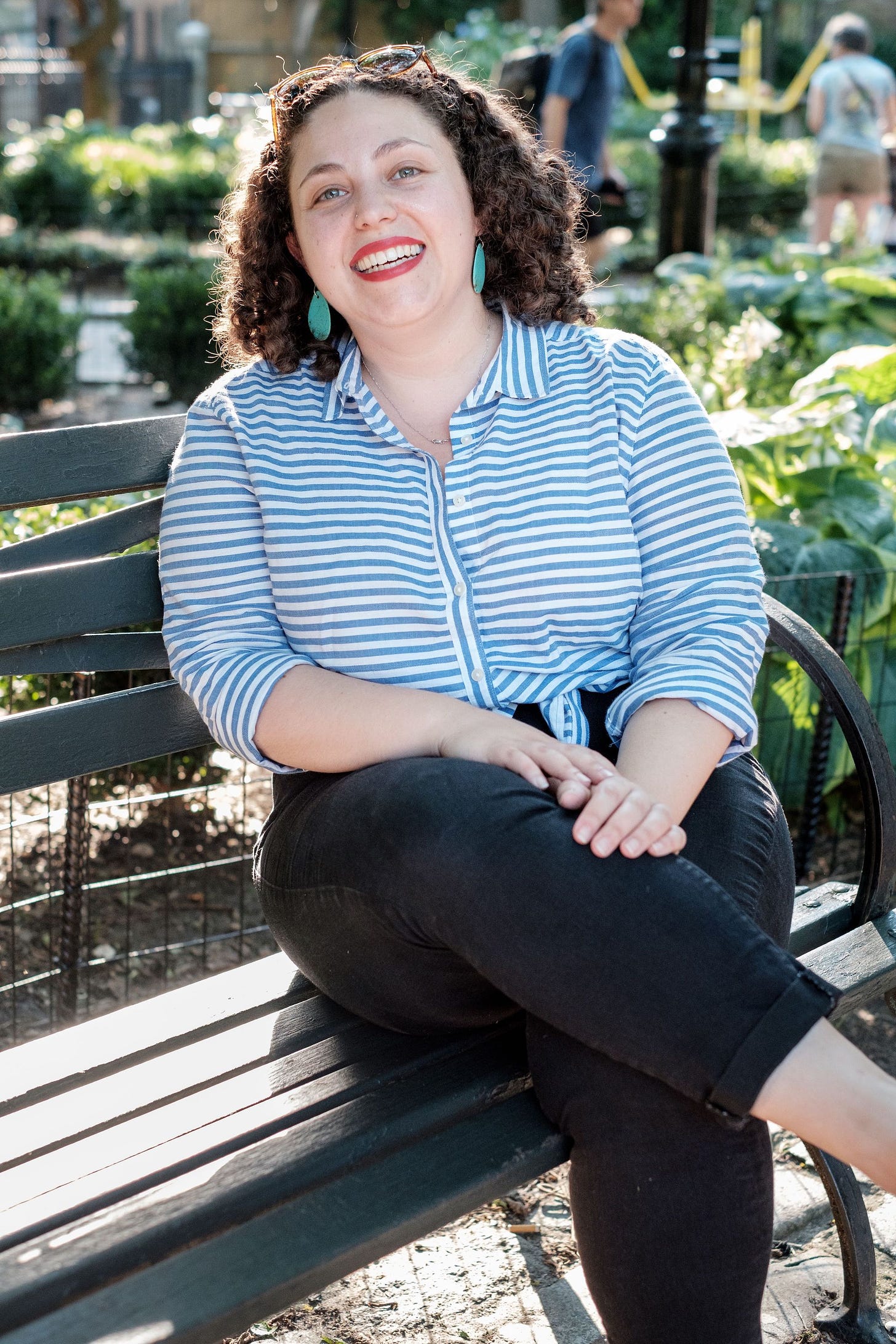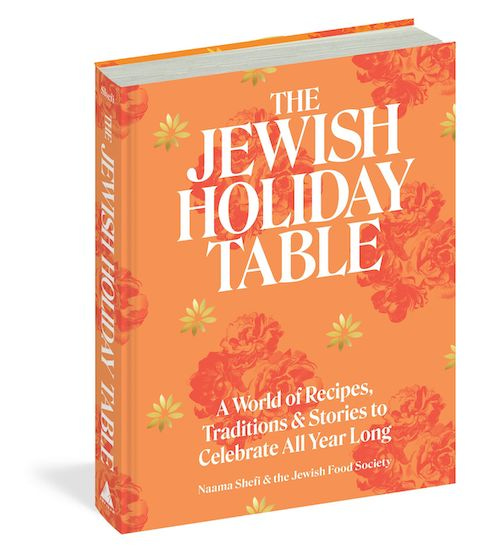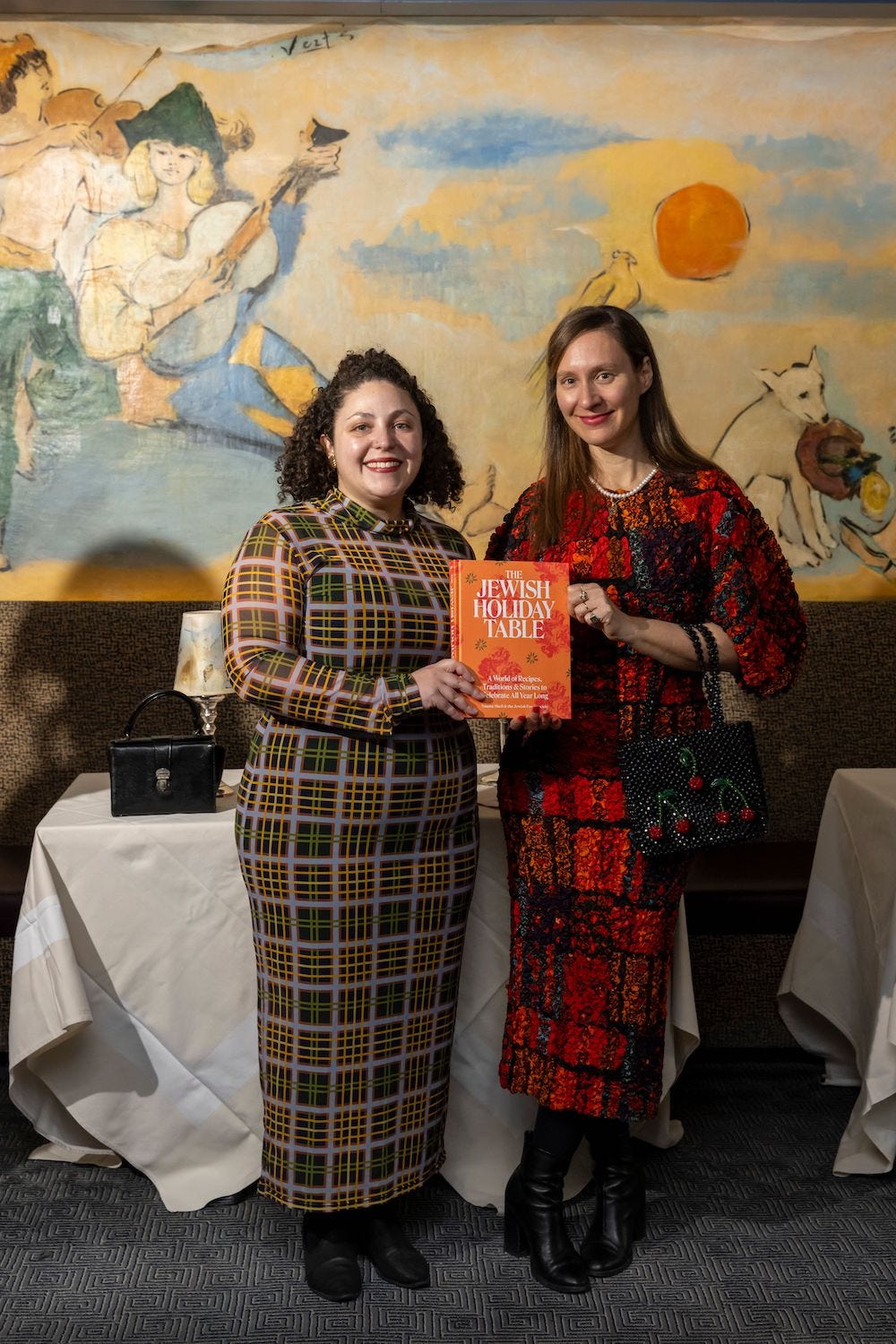

Discover more from The Jewish Table
A Zucchini Pashtida You Can't Stop Making
Plus: The Four Questions with Devra Ferst of The Jewish Food Society
This week’s newsletter is going out to everyone, but *most* of my newsletters are just for paid subscribers. As a paid subscriber, you get weekly recipes and stories from around the Jewish world (like Dilled Carrot Gravlax and Majestic Boureka Pie), plus a chance to interact with other readers. You also support my work, which truly makes all the difference to me as a full-time freelance food writer and cookbook author. If you’ve been thinking about upgrading to paid, you can do that here or below. Thank you, as always, for being here xo
Hello Dear Readers,
I have some truly lovely things to share with you this week, like this delicious Zucchini Pashtida (think: crustless quiche) from the new cookbook, The Jewish Holiday Table, and an interview with my dear friend and fellow food writer, Devra Ferst.
But like so many other weeks over the last 8 months, I have been consumed and distracted this week by the daily horrors unfolding in the Middle East. After so many months of pain and outrage, I know that many of us are wondering how do we come back from this—as Jews, as humans, as a community?
But I’ve also been wondering not just how can we come back—but also, how do we not lose absolutely everything when we have already lost so much?
The loss of Israeli hostages in Gaza—people who spent their last days terrified and alone—is the loss of the whole world.
The loss of children in Rafah to horrific violence they did nothing to deserve, is the loss of the whole world.
Meanwhile, the loss of children in the Congo and Darfur and Nigeria, who have also suffered immensely and died at the hands of hate and greed—but have gone mostly forgotten in the Middle East-obsessed news cycle—is the loss of the whole world.
How, I have wondered many times late at night when I can’t sleep, do we hold all of this bad, all of this heartbreak, all of this darkness, and not forever lose the entire world? I don’t have a great answer. But I think there is wisdom and solace, and even hope, in fully feeling our grief and outrage, while seeking out and amplifying the moments of light, however few and far between they may seem.
For me, recent moments of light have included:
The truly brave work of Standing Together—the grassroots Jewish-Arab peace organization—that managed to stop radical settlers from blocking humanitarian aid into Gaza.
The Black faith leaders in America who, despite being angry with Biden, are campaigning *against* Donald Trump. Because they rightfully understand Trump to be an existential threat to freedom, both here and abroad.
The World Central Kitchen that, despite everything, continues to show up to feed people in need. In Gaza. In Ukraine. In Brazil after the recent floods. I remain in awe of their daily heroism.
The bad, the horrific, the shattering heartbreak…it is is everywhere. We don’t have to look for it. And I don’t suggest that we minimize it in any way or turn a blind eye towards it. But by fixing our gaze, at least some of the time, to the pockets of good, to the light, to one another, we can sustain a kernel of hope. And as long as that kernel remains, we have not lost everything.
The Four Questions Interview: Devra Ferst
Welcome to the latest installment of The Four Questions, The Jewish Table’s semi-regular interview segment featuring Jewish food luminaries. This week I’m thrilled to be joined by Devra Ferst, a co-creator of Jewish Food Society’s new cookbook, The Jewish Holiday Table.
Early on in my food writing career (and even earlier in her’s) Devra was the food editor at The Forward. We worked on many stories together during her tenure, and I was always impressed by Devra’s thoughtful edits and unmistakable enthusiasm for Jewish food. In the years since Devra joined me on the freelance side of things, we have remained friends, occasional collaborators, and general fans of one another.
It was no surprise to me when Devra joined the team at Jewish Food Society—a non-profit organization founded by Naama Shefi that preserves and celebrates Jewish culinary heritage from around the world. Over the past several years, Devra has helped build Jewish Food Society’s ever-growing treasure trove of global Jewish recipes and stories. And recently, alongside Shefi and the JFS team, she turned this collective passion for global Jewish food into a cookbook.
The resulting book offers a gorgeous collection of holiday-centric menus from notable Jewish folks around the world. From Fany Gerson’s Mexican-Jewish Passover menu (Brisket Tamales, Gefilte Fish in Spicy Tomato Sauce, Mexican Chocolate-Covered Caramelized Matzah) to Beejhy Barhany’s Ethiopian Shabbat dinner (Collard Greens with Garlic and Ginger, Dabo, the soft and spiced Ethiopian bread used for Shabbat), the recipes are stunning in their breadth and diversity.
But just as delicious are the personal essays that accompany the menus. Each one tells a story of family, of immigration (and often religious or cultural persecution), of setting down new roots in an unfamiliar place, of finding comfort in family dishes, and about how those dishes evolved, along with the people making them, in their new home.
Devra worked closely with each of The Jewish Holiday Table’s contributors to help them craft concise and compelling essays. In our interview, she told me about the joys and challenges of capturing a family story, the recipes she can’t stop making from the book, and what it felt like to share her own grandmother’s story (and her Juniper Gravlax recipe). Devra is every bit as delightful and insightful today as she was way back when she was my editor at The Forward. I hope you take a moment to read her words, and then enjoy the recipe below!
How would you describe the focus of The Jewish Holiday Table, and what do you hope people take from it?
The most important takeaway I hope readers get is the breadth and diversity of the Jewish kitchen. It is pretty extraordinary and, as someone who grew up Ashkenazi in the US, I didn’t fully appreciate it. I’ve been writing about Jewish food for a long time, but this book pushed me to understand just how broad and important the Jewish kitchen is—and the importance of preserving dishes and memories. I hope people see themselves in this book! Especially people whose families aren’t at the forefront of the dialogue of Jewish life in America.
I also hope people cook from the book, and not just recipes that feel familiar. I understand and respect that people have traditions around holiday menus. But I would encourage everyone to add a dish, rather than subtract. You can still make your bubby’s kugel, but what might you add that feels new? Or maybe the first night of Passover you go with your family’s traditional dishes, and the next night you mix it up. These recipes are so wonderful that you also don’t need to wait for a holiday to make them.
Finally, I hope that people sit down and really read the book. It is so narrative heavy and the stories are so varied and meaningful. I want people to take it from their kitchen to their couch and enjoy it like a novel as well as a cookbook.
You worked closely with the book’s essay contributors. What was that process like?
When we first started working on the book, we planned to follow a similar reported story format similar to what we do for The Jewish Food Society’s website. But we realized it would be even better to help people tell their stories in their own words. I spoke to the contributors many times during the process—in person, on the phone, and over Zoom—and came away with pages and pages of notes. And I used those interviews to help them craft their stories. It is a challenging thing to do! How do you summarize the entirety of your family’s history in just 400 words?
My job was to help them get to the core of their narratives, and pull out which dishes were the most integral to their specific stories. In many cases, like with Ron Arazi’s Moroccan-Jewish family, you cannot talk about Sukkot without talking about Fava Bean Soup with Harissa. And for Mitchell Davis, his family’s Ashkenazi Rosh Hashanah meal in Toronto—their Brisket with Onions, Kasha Varnishkes with Onions and Mushrooms, and Carrot and Sweet Potato Tzimmes—is the center of their holiday. It’s a very intimate thing to talk to people about their families and traditions, but it is so rewarding. I don’t want to sound cheesy, but it was truly an honor.
I loved that you also had a chance to share your own family’s food—specifically your grandmother’s Juniper Gravlax recipe. What was it like to share that story?
Writing that story was really emotional for me. My grandmother was such an important person in my life. I still think about her all the time. And I saw the essay as an opportunity to give her some of the honor that she deserved, but didn’t always get in her lifetime. It was particularly meaningful to get to write about our relationship, which shaped my life pretty profoundly and evolved from being strained, especially after I lost my mother at 13, to a true inter-generational friendship.
You can’t separate grammy from her gravlax. It is so delicious and so simple. It is a recipe that is Jewish and it’s not Jewish. But in my family, we don’t have a cholent or tzimmes recipe. We have this gravlax. It is part of my family’s story and part of the American Jewish experience.
Is there a dish that you learned about while working on the book that you have since incorporated into your own life?
Naama’s family recipe for Zucchini Pashtida (zucchini casserole) is so good, I can’t stop making it. I has this amazing balance of textures from the thinly sliced zucchini and the Panko. I’ve made it a bunch of times for family and friends, and it is always a hit. The Cherry, Chile, and Cilantro Salad by Hila Alpert is also so good. If you told me to combine cherries with cilantro, it wouldn’t have worked in my brain. But it is actually such a refreshing and incredible combination. It is a great dish to make when cherries are in peak season.
Zucchini Pashtida (Zucchini Casserole)
Like Devra, I have made this dish—which is essentially a crustless zucchini quiche—several times already. I love the interplay of crispy breadcrumbs and tender zucchini, and the fluffy texture the Greek yogurt adds. It is incredibly easy to make and delicious served either warm or at room temperature. It would make an excellent addition to a Shavuot spread or any summery picnic. For all of the other incredible dishes Devra mentioned in her interview, grab a copy of The Jewish Holiday Table.
Serves 6 to 8
Extra-virgin olive oil
2 tablespoons Panko-style or regular dry breadcrumbs, plus more for the pan
1 large onion (about 10 ounces/280 g), finely chopped
1 to 1¼ pounds (450 to 560 g) zucchini (2 to 3 medium), sliced into thin rounds
Kosher salt
3 large eggs
¾ cup (190 g) plain whole-milk Greek yogurt
½ cup (50 g) plus 2 tablespoons finely grated hard cheese, such as Parmesan, kasseri, or kashkaval
¼ cup (60 ml) whole milk
¼ cup (30 g) all-purpose flour
Freshly ground black pepper
2 to 3 tablespoons chopped fresh dill or flat-leaf parsley, or a mix
Place a rack in the upper third of the oven and preheat the oven to 350°F (175°C). Grease a 9-inch (22.5 cm) pie pan with olive oil. Dust the pan with breadcrumbs and tap out any excess crumbs.
In a large skillet, heat 3 tablespoons olive oil over medium heat. Add the onion and cook, stirring occasionally, until very soft and fragrant, 8 to 10 minutes. Transfer the onion to a large plate or tray and set aside.
Increase the heat to medium-high, and if the pan seems dry, add another ½ tablespoon olive oil. Add the zucchini, sprinkle with salt, and sauté until the zucchini slices have softened a bit but are not completely cooked through, about 5 minutes. Transfer the zucchini to the plate with the onions and let cool for about 10 minutes.
In a large bowl, stir together the eggs, yogurt, the ½ cup (50 g) grated cheese, and the milk until smooth. Stir in the flour and season the mixture with 1 teaspoon salt and a few twists of black pepper. Fold in the dill, onion, and zucchini, mixing well.
Pour the mixture into the prepared pie pan, smoothing the surface so the zucchini slices lie flat. Sprinkle with the 2 tablespoons breadcrumbs and the remaining 2 tablespoons cheese.
Bake the pashtida until firm and golden brown, 55 to 65 minutes. If you like, turn on the broiler and cook for a few more minutes for a crispy golden-brown surface. Remove from the oven.
Let the pashtida cool for a few minutes before serving warm, or let cool completely and serve at room temperature.
This recipe was excerpted from The Jewish Holiday Table by Naama Shefi and the Jewish Food Society (Artisan Books). Copyright © 2024.
Subscribe to The Jewish Table
recipes + stories from the world of jewish food, by leah koenig













Leah, I appreciate your insight and heart so much. Thank you.
Thanks for pointing out "moments of light" in our dark times, Leah. It's hard to see and read about so much horror without finding reasons to hope that things can be made better and that we might play a part. I enjoyed reading about Devra and learning about this book of recipes and personal essays--and the pashtida does look yummy!